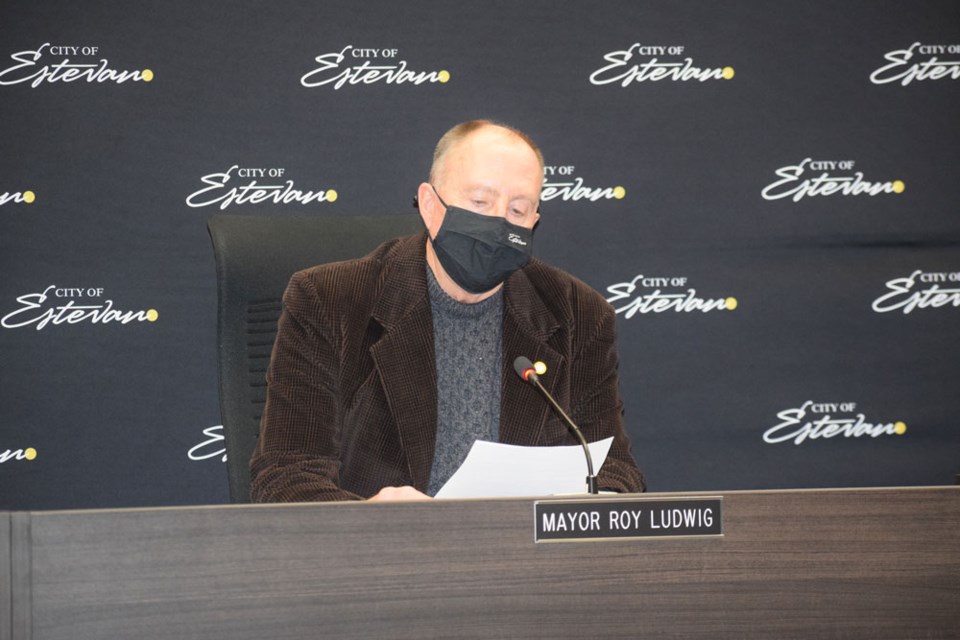ESTEVAN - The city of Estevan has seen a decrease in its population, according to figures released last Wednesday by Statistics Canada in the 2021 federal census.
The census pegs Estevan’s population at 10,851, which is down from the 11,483 residents who were reportedly in the city in 2016.
It’s a decrease of 632 people, or 5.5 per cent, over the five-year span.
Mayor Roy Ludwig said he wasn’t surprised to see that Estevan’s population was down, since the oil and gas sector has been struggling since 2014.
“We need oil to go up, and, of course, as everyone is aware, it has gone up, and it looks like it is going to stay up north of $70,” said Ludwig. “If that continues, then that will bring the confidence back, and then we’re optimistic that we can get some people coming back into our community.”
The mayor has started to see more activity in the community in recent months.
“The people that were able to stay, and the companies that were able to stay in our community, of course they’ll be the first out of the gate and they’ll benefit,” said the mayor, who expects the price of oil will likely settle in around U$70-$80 per barrel, which he said should be enough to make the industry profitable.
But it will take time for confidence in the sector to return.
“At the end of 2014 … some of the people left our community, looking for other work, and a lot of them left the oil and went to other work,” said Ludwig.
It means there is a shortage of employees with experience, so those who do return to the patch might need to be retrained.
Estevan’s census population is below Weyburn’s for the first time in decades. Weyburn’s population was at 11,019, up from the 10,870 recorded in 2016.
Ludwig pointed to the covered population report, released by eHealth Saskatchewan on an annual basis, as a more accurate reflection of the city’s population. It shows there were 12,241 people in the city as of June 30, 2021, about 1,400 more than the census.
Weyburn’s population was listed at 11,852 in the eHealth report.
“I would hang my hat on that a little bit, because in the past we’ve always fallen to the health numbers, which are more accurate,” said Ludwig.
Ludwig said the city is working hard to bring the population back up, through the efforts of the economic development committee, and it is working with the rural municipalities of Estevan and Coalfields and the Town of Bienfait.
“We also have access to federal monies, so we’re working very hard to bring new businesses to our community to generate more economic growth. So we’re been flat out on that side for a few years now. We do see some hopeful signs, and some of the things we’ve been working on have been coming to fruition, so we’re cautiously optimistic.”
The city will continue to advocate for retrofitting the Shand Power Station and/or Unit 6 at the Boundary Dam Power Station with carbon capture and storage technology. It’s still the most reliable baseload power source, he said.
“For baseload power, basically we’re back to coal or nuclear, and I know some people would argue natural gas is good, but it’s not as good as coal or nuclear, and that’s another thing the feds will be going after is … natural gas, which, of course, they consider a fossil fuel,” said Ludwig.
The RM of Estevan also saw a decrease, as it declined by 91 people from 1,370 to 1,279, or 6.6 per cent.
Administrator Michelle Dickie said she wasn’t surprised with the numbers, either. The decrease was in line with expectation.
The RM is also trying to bring new business into the community, and is working with the Southeast Sask. Economic Partnership, alongside the RM of Coalfields and the Town of Bienfait.
“That’s been going really, really well. We’re a great working group. We’ve been together for just over a year, and we have some leads on a few things,” said Dickie.
The RM of Estevan’s population, according to the Covered Population document, was 712 – the largest in the southeast but below the census.
The decrease in population will affect the amount of money that the city and the RM receive through per capita funding arrangements, such as the provincial municipal operating grants and the federal gas tax. And with fewer people here, that means less people are paying taxes.
“It makes it tougher to budget, because of course you don’t want to cut back on your services,” said Ludwig. “The only option that we have, as a corporation, as a city, is to reduce services or to increase taxes.”
Other population totals for communities were (number in brackets is the 2016 census total): Alameda, 345 residents (369); Alida, 103 (120); Arcola, 636 (657); Bienfait 668 (762); Carievale 85 (240); Carlyle 1,524 (1,508); Carnduff 1,150 (1,099); Forget 35 (55); Frobisher 127 (160); Gainsborough 227 (254); Glen Ewen 159 (154); Kenosee Lake 236 (234); Kisbey 158 (153); Lampman 673 (675); Macoun 272 (269); Manor 305 (295); Midale 510 (604); North Portal 113 (115); Oxbow 1,286 (1,328); Redvers 1,008 (1,042); Roche Percee 75 (110); Storthoaks 86 (108); Stoughton 652 (649); Torquay 215 (255); and Tribune 25 (45).
The population in the RMs was: Antler 451 (523); Argyle 331 (290); Brock 252 (267); Browning 355 (375); Cambria 277 (309); Coalfields 330 (368); Cymri 568 (549); Enniskillen 422 (459); Moose Creek 306 (379); Moose Mountain 489 (492); Mount Pleasant 419 (414); Reciprocity 355 (341); Souris Valley 220 (249); Storthoaks 306 (292); and Techumseh 255 (271).
The information for the census was submitted last spring.
Saskatchewan’s population was at 1,132,505 people, which is the highest in the province’s history.








